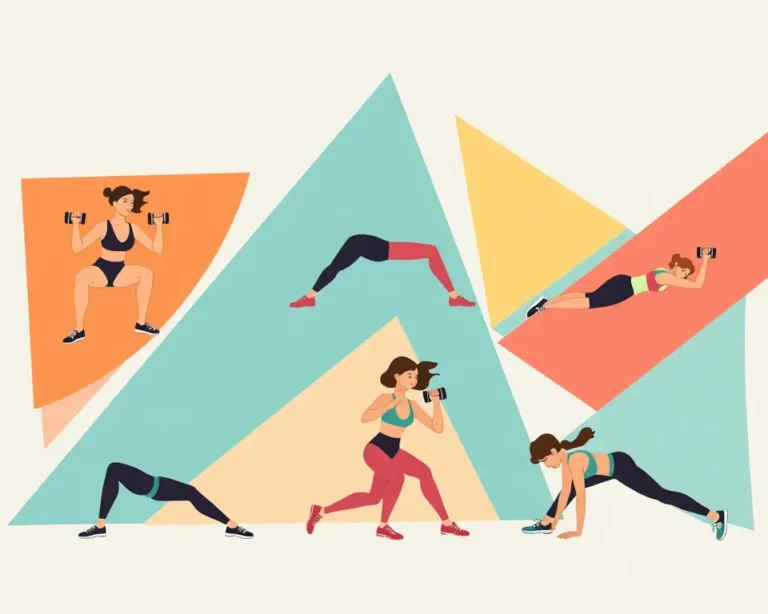For women seeking to enhance their overall fitness and well-being, incorporating strength training exercises is crucial. Strength training offers numerous benefits, including increased muscle mass, bone density, and improved metabolism. A well-rounded strength training routine can also help manage chronic conditions, boost mental health, and enhance the quality of life. Here are five essential exercises that women should include in their workout regimen for total body strength.
1. Squats: The Foundational Strength Builder
Squats are a fundamental exercise that targets multiple muscle groups, making them an excellent choice for building overall strength. They primarily work the quadriceps, hamstrings, and glutes, but also engage the core and lower back for stabilization.
How to Perform a Basic Squat:
- Stand tall with your feet shoulder-width apart, toes pointing slightly outward.
- Keep your back straight and your core engaged.
- Lower your hips as if you’re sitting back into a chair, ensuring your knees stay behind your toes.
- Descend until your thighs are parallel to the ground or as low as comfortable.
- Push through your heels to return to the starting position, squeezing your glutes at the top.
Variations:
- Goblet Squats: Holding a dumbbell or kettlebell close to your chest.
- Barbell Back Squats: Using a barbell across your upper back.
- Chair Squats: Using a chair for support can help beginners master proper form.
Benefits of Squats:
- Strengthens lower body muscles.
- Improves core stability.
- Enhances functional fitness, making everyday movements easier.
2. Deadlifts: The Ultimate Full-Body Power Move
Deadlifts are a compound exercise that works nearly every muscle in the body, from the lats and abdominals to the glutes and hamstrings. This exercise is highly effective for building strength, improving posture, and increasing overall power.
How to Perform a Deadlift:
- Stand with your feet hip-width apart, with a barbell in front of you.
- Hinge at your hips, bending your knees slightly, and grip the bar with an overhand grip, slightly wider than shoulder-width.
- Keep your back straight and your core engaged.
- Lift the bar by extending your hips and knees simultaneously, keeping the bar close to your body.
- Stand tall with your shoulders back and your glutes squeezed.
- Lower the bar back to the ground with control, reversing the movement.
Variations:
- Romanian Deadlifts (RDLs): Focus on hamstring engagement with less knee bend.
- Dumbbell Deadlifts: Using dumbbells instead of a barbell.
- Stiff Leg Deadlifts: Target the hamstrings with minimal knee bend.
Benefits of Deadlifts:
- Strengthens the entire posterior chain (backside of the body).
- Improves grip strength.
- Boosts overall power and athleticism.
3. Push-Ups: The Upper Body All-Star
Push-ups are a versatile exercise that primarily targets the chest, shoulders, and triceps, while also engaging the core for stability. They can be modified to suit different fitness levels, making them accessible to beginners and challenging for advanced individuals.
How to Perform a Push-Up:
- Start in a plank position with your hands shoulder-width apart, fingers pointing forward.
- Keep your body in a straight line from head to heels.
- Lower your chest towards the ground by bending your elbows, keeping them close to your body.
- Push back up to the starting position, fully extending your arms.
Variations:
- Wall Push-Ups: Standing and pushing against a wall.
- Knee Push-Ups: Performing push-ups on your knees to reduce the load.
- Incline Push-Ups: Using a bench or elevated surface to modify the angle.
Benefits of Push-Ups:
- Strengthens upper body muscles.
- Improves core stability.
- Requires no equipment, making it convenient for at-home workouts.
4. Dumbbell Rows: Sculpting a Strong Back
Dumbbell rows are an excellent exercise for strengthening the back muscles, particularly the latissimus dorsi (lats), rhomboids, and trapezius. A strong back is essential for good posture, injury prevention, and overall upper body strength.
How to Perform a Dumbbell Row:
- Place one knee and hand on a bench for support, keeping your back flat.
- Hold a dumbbell in the opposite hand, letting it hang straight down.
- Pull the dumbbell up towards your chest, keeping your elbow close to your body.
- Squeeze your shoulder blades together at the top of the movement.
- Lower the dumbbell back to the starting position with control.
- Repeat on the other side.
Variations:
- Barbell Rows: Using a barbell instead of dumbbells.
- Seated Cable Rows: Using a cable machine for resistance.
- Inverted Rows: Using a bar or suspension trainer to pull your body up.
Benefits of Dumbbell Rows:
- Strengthens back muscles.
- Improves posture.
- Helps balance upper body strength.
5. Plank: The Core Strengthening Champion
The plank is an isometric exercise that engages multiple core muscles, including the rectus abdominis, transverse abdominis, obliques, and lower back muscles. It is highly effective for improving core stability, which is essential for overall strength, balance, and injury prevention.
How to Perform a Plank:
- Start in a push-up position with your forearms on the ground, elbows directly under your shoulders.
- Keep your body in a straight line from head to heels.
- Engage your core by squeezing your abdominal muscles and glutes.
- Hold the position for as long as you can maintain proper form, gradually increasing the duration over time.
Variations:
- Side Plank: Supporting your body on one forearm and the side of your foot.
- Plank with Leg Lift: Lifting one leg off the ground while maintaining the plank position.
- Plank with Arm Lift: Lifting one arm off the ground while maintaining the plank position.
Benefits of Planks:
- Strengthens core muscles.
- Improves stability and balance.
- Enhances posture.
By incorporating these five exercises into your strength training routine, women can achieve total body strength, improve their overall fitness, and enhance their quality of life. Remember to start slowly, focus on proper form, and gradually increase the intensity and duration of your workouts as you get stronger. Consulting with a certified personal trainer can also help you design a personalized workout plan that meets your specific needs and goals.







